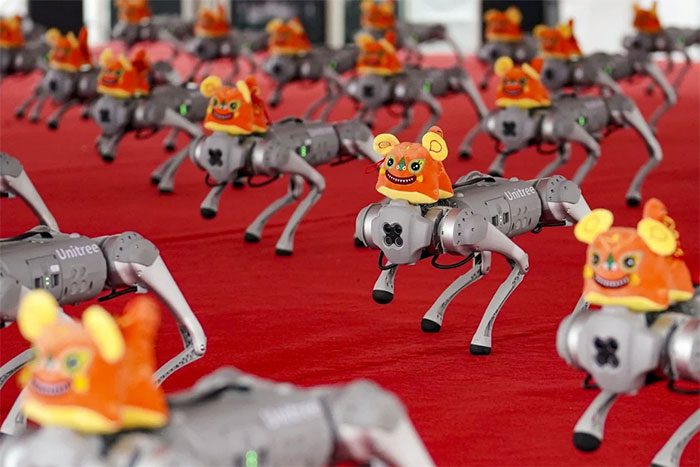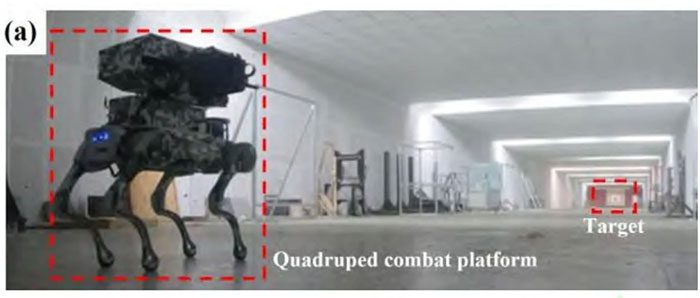The Robot Dog Brigade in China Has the Potential to Revolutionize Warfare in the Future Thanks to Modern Technology and Low Costs.
We are witnessing rapidly changing modern military conflicts, with a significant focus on the heavy reliance on unmanned aerial vehicles (UAVs) in the Russia-Ukraine war.

Robot dogs can reshape modern warfare. (Photo: Getty).
However, what could be more terrifying than UAVs? It may be the robot dog brigade, currently being researched and tested by scientists from China.
Although there are no detailed evaluation results yet, a study by researchers indicates that these robot dogs can shoot better than seasoned troops when armed.
Specifically, after being equipped with a 7.62mm machine gun, a robot dog can fire 750 rounds per minute, outfitted with an electro-optical sight, a shock-absorbing mount, and an automatic reloading system.
They can accurately target humans from distances up to 100 meters with a very high accuracy rate, with a deviation from the target of only about 5 centimeters.
The research emphasizes that if the robot aims at a person’s chest, most bullets will hit the heart area. This poses a challenge for machine guns fired by humans, which are known more for suppressive fire than precision.
Even when using the M16 rifle—a weapon known for its high accuracy—the standard deviation radius can reach up to 12 centimeters at a distance of 100 meters.
Thus, these robot dogs can achieve very high accuracy when equipped with heavy weaponry.

Robot dogs produced by China can achieve very high accuracy with machine gun equipment. (Photo: Nanjing University of Science and Technology).
To achieve this, the robots are equipped with artificial intelligence (AI), which can accurately predict their physical state after firing a shot. Based on this, they adjust their posture in real time to achieve the highest accuracy for the next shot.
According to researchers, this technology could significantly impact the future of modern warfare.
“Urban warfare, including counter-terrorism operations, hostage rescue missions, as well as clearing streets and buildings, has gradually become a prominent aspect of contemporary conflict,” said Xu, a Professor of Mechanical Engineering at Nanjing University of Science and Technology.
“Four-legged robots, based on biological principles, can utilize independent ground support points to enhance mobility and adaptability in complex urban combat environments.”
For many years, the United States also experimented with using robot dogs in combat. In 2015, Boston Dynamics developed a four-legged robot for the military.
However, due to excessive noise during operation and other limitations, this technology has never progressed beyond the testing phase.
In China, robot dogs have previously lagged behind their American counterparts in technological advancements. But that gap has significantly narrowed in recent years.
Chinese robot dogs can now navigate stairs, perform acrobatics like backflips, and traverse debris or tropical rainforests. Additionally, they can operate continuously for nearly four hours while carrying a load of 20 kilograms.
Moreover, thanks to a developing electronics industry and a complete supply chain, a robot from China costs about $3,000, which is even lower than the cost of a battery pack (priced at $4,000) for the American robot dog Spot.
In 2020, the cost of the Spot robot ranged from $70,000 to $140,000, depending on the equipment it was outfitted with.


















































